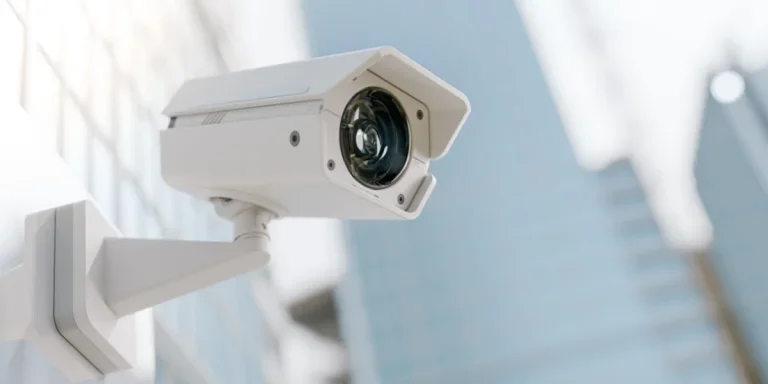In 1942, German scientists were the first to invent and use closed-circuit television (CCTV) to monitor their V2 rocket launches. Shortly after, American scientists saw the technology’s potential and used it to observe atomic bomb tests. Fast-forward to the modern day, and CCTV has advanced into one of the smartest, most popular, and all-encompassing security systems in the world.
The closed-circuit in CCTV describes how the video feed is routed directly to a specific, limited group of monitors, as opposed to regular, signal-based television broadcasts.
And although CCTV systems are very common nowadays, buyers have to consider numerous factors when choosing which variety is correct for them. In this article, we’ll explain everything you need to know about CCTV as well as what businesses should consider before stocking them.
Table of Contents
The 2 main types of CCTV cameras: analog vs. IP
Analog CCTV cameras
IP CCTV cameras
3 popular CCTV cameras to choose from
1. Dome CCTV cameras
2. Bullet CCTV cameras
3. Day and night CCTV cameras
What businesses should consider when choosing CCTV systems
1. Cables and connectivity
2. Indoors vs. outdoors
3. Resolution
4. Storage
5. Scalability
Final words
The 2 main types of CCTV cameras: analog vs. IP

CCTV security cameras have one purpose: recording video footage for private security, and are therefore common in areas where proprietors want to protect their assets, like offices, building premises, factories, or warehouses.
These cameras fall into two types:
Analog CCTV cameras
Despite recent technological advances in CCTV technology, analog CCTV cameras remain the most common type in use today. These CCTV systems offer basic features and store all recorded footage locally on-site.
IP CCTV cameras
Meanwhile, IP cameras come with more advanced features as well as offering all the basic features of their analog counterparts. They feature higher resolutions, remote zooming, camera adjustment, and remote viewing via a PC or smartphone. Additionally, these cameras can alert users should they detect unusual activity.
3 popular CCTV cameras to choose from

CCTV cameras are available in various styles, each designed for different surveillance needs. From dome to bullet and day and night cameras, each style offers distinct advantages. Let’s take a closer look:
1. Dome CCTV cameras
Dome CCTV cameras get its name from its dome-shaped casing, which gives it a sleek and discreet appearance. Despite its subtle design, this shape is highly effective at deterring criminals. How? The dome conceals the camera’s viewing direction, creating uncertainty for potential thieves or vandals while also improving multi-angle security.
Key benefits
- Its discreet design blends seamlessly into any environment
- Dome CCTV cameras are versatile enough for indoor and outdoor use
- The dome casing makes the camera discreet as well as protects it from tampering and damage
- Offer full coverage with 360-degree rotation to ensure total surveillance
2. Bullet CCTV cameras
Bullet CCTV cameras also get their name from their bullet-like cylindrical design. These cameras excel at long-distance surveillance and are more common for use outdoors, in part because of their weatherproof casings (they can handle sunlight, rain, dirt, and dust). They can be mounted on walls or ceilings to focus on specific areas.
Key benefits
- This camera’s design is very visible, giving it a higher chance of warding off potential criminals
- Bullet CCTV cameras are durable enough to resist dirt and harsh environmental conditions
- Their long-distance coverage makes them perfect for monitoring larger areas
- The cylindrical casing protects from rain, glare, and dust, ensuring reliable performance
3. Day and night CCTV cameras
These cameras have a design that offers reliable performance in all lighting conditions thanks to their highly sensitive imaging chips, allowing them to capture clear video footage regardless of the time of day. This way, they ensure consistent image quality in different light environments.
Key benefits
- Can deliver clear recordings even in dim settings
- Can capture footage in color and black-and-white modes
- Can easily handle glare, reflections, direct sunlight, and low light
- Have a durable casing that protects the camera from harsh elements, making them perfect for outdoor use
What businesses should consider when choosing CCTV systems
1. Cables and connectivity

The first thing consumers are likely to consider when buying a CCTV system is whether they want a wired or wireless setup. Wired CCTV systems provide a more stable connection, as video cables send data directly to a digital video recorder. However, installing these cables can be a hassle, especially if consumers want to install the cameras in hard-to-reach areas.
On the other hand, wireless systems rely on WiFi to send the image data, allowing for more flexible camera placements. However, they can be weak when it comes to interference and can have lapses in operation if placed too far from the receiver.
2. Indoors vs. outdoors
Consumers will also choose models depending on where they want to place their CCTV cameras. Ideally, you should offer them systems that can work both indoors and outdoors, but they may need specialized systems for more niche uses.
The bare minimum is that outdoor video cameras should be weatherproof to prevent damage from the elements. Outdoor security cameras should also have vandal-resistant designs to deter intruders from trying to break them. Lastly, stock options with infrared night vision (up to 100 feet recommended) for night-vision images.
3. Resolution

A CCTV system is only as good as its resolution. While lower-resolution cameras are more affordable, their recordings will look grainy, making it difficult to identify specific details. However, higher resolutions like 4K and 5MP offer super clarity, helping to capture even the smallest details, like license plate numbers.
4. Storage
Most CCTV systems come with terabytes of storage, giving consumers enough space to store recordings locally before considering an upgrade. Cloud storage subscriptions also allow users to back up recordings online without upgrading physical storage.
5. Scalability

Consumers who intend to add additional security cameras in other areas later on will need a scalable CCTV system. Such systems have extra, open camera channels in order to do so. Additionally, their storage should be upgradable, too – the higher the storage, the more cameras consumers can add or the higher the resolution they can enjoy.
Final words
CCTV systems have come a long way since their invention over 80 years ago, evolving from a niche product to something smarter and more scalable than ever.
Even better, these modern CCTV cameras now feature advanced video analytics, massive onboard storage, higher resolutions, and expanded capacities, while even more advanced models also come with battery/solar capabilities.
All these benefits make CCTV systems hard to ignore for individuals or businesses looking for professional-grade property protection and monitoring – and they’re only getting better.




